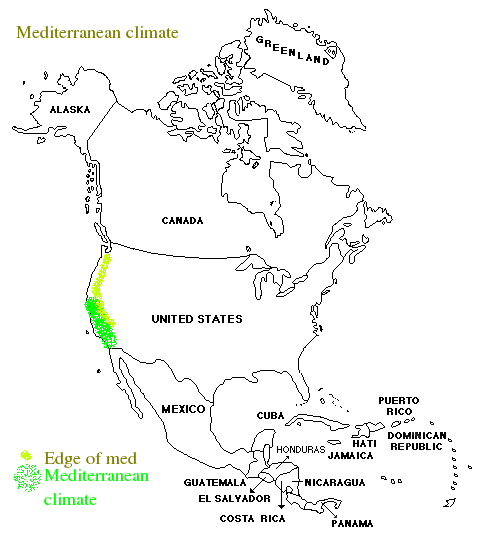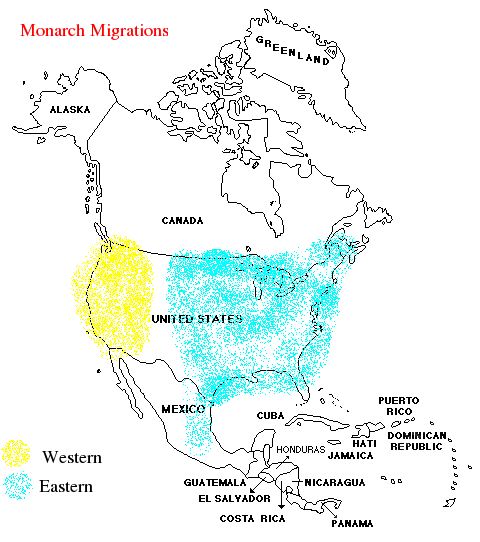What's the nature of your garden?
How friendly is your yard to wildife? Is your yard positive; bringing in local birds and butterflies and giving them a safe place to feed and reproduce? Is it neutral; not helping but not hurting. Is your yard negative; harming wildlife that comes in and even spreading its detrimental effects to surrounding wildland? (If you're in between yes or no, adjust your score accordingly for each item.) Here is an awesome pictorial representation at what we are trying to get at. http://www.npr.org/blogs/krulwich/2012/11/29/166156242/cornstalks-everywhere-but-nothing-else-not-even-a-bee|
What is in your garden? |
|
Total |
|
|
1. Are there grassy weeds everywhere.
|
Yes -3 |
No +1 |
|
|
2. Are there are any of the following plants in the yard: Iceplant, Pampas grass, Arundo, Scotch broom, Eucalyptus, Wild fennel, French broom, Cape ivy, Tamarisk, European beach grass, Artichoke thistle, Perennial pepperweed, Fountain grass, Himalayan blackberry, gorse YEACH! |
Yes -1 for each individual plant |
No +1 |
|
|
3. There are few old logs combined with rocks to make my own 'wildland'. I did not steel any of these from wild areas. |
Yes +2 |
|
|
|
4. I there a bird bath (three foot or higher form the ground) |
Yes +3 |
No -1 |
|
|
5. Is there a bird bath/water feature at ground level, or lower than three feet and live in an urban area or an area with cats. AKA I have a cat feeder. |
Yes -1 |
|
|
|
6. Is there a Lawn? |
Yes -2 for each 25sq ft (5 ft by 5 ft square) |
No +1 |
|
|
7a. I do not live in a desert and all of the new flower beds are mulched with redwood, cedar, oak or pine at least 3 inches deep (give honest answer between 3 and -3) OR 7b. I live in a desert and I have NO redwood, cedar, oak or pine mulch and I have controlled the weeds. |
Yes +3 |
No -3 |
|
|
8. The Yard must be watered to stay alive and it is more than two years old (and there are plants in it that are not plastic, the flamingos don't count)? |
Yes -2 |
No 0 |
|
|
9. Is there more than one species of native plant from your county? (County specific) |
+2 each up to 5 |
|
|
|
10. Is there more than one genus of native plant from your region?(Flyway) |
+1 for each up to 5 |
|
|
|
11. Are there 'hummingbird' or 'butterfly' plants, or 'wildflowers' that are not native to your region? |
Yes -1 for each up to 10 |
No 0 |
|
|
12. Does the yard have only groundcovers? only trees? only shrubs? Only flowery perennials? |
Yes -1 |
No +1 |
|
|
13. Are insecticides or fungicides used in the yard at least once a year "environmentally friendly," natural, store bought or homemade included? (Are you killing off the bottom of the food chain?) |
Yes -4 |
No 0 |
|
|
14. Is there a Hummingbird feeder? |
Yes -2 |
No 0 |
|
|
15. Is there bird seed being put out for the birds? |
Yes -2 |
No 0 |
|
|
16. Has black plastic been used to kill weeds? Is there weed mat, Jute mat, shredded newspaper mulch, or lawn clippings mulch? |
Yes -1 for each |
No 0 |
|
|
17. Is the yard on Drip irrigation? |
Yes -1 |
No 0 |
|
|
18. Is there Zoned overhead irrigation watering once a week or less. (including hand watering areas as they need it less than each week) |
Yes +1 |
No 0 |
|
|
19. Are you (or your spouse you can always blame it on them) feeding the deer, squirrels, or other wildlife? Do you leave pet food outside eg cat food, dog food, pig food?
|
Yes -4 |
No 0 |
|
|
20. Do you have a cat that goes outside? Are there feral cats visiting your yard? |
Yes -4 for each cat |
No 0 |
|
|
21. Do you leave outdoor lights on at night?
|
Yes -1 |
No +1 |
|
|
Greater than 20 I'd consider a wildlife yard. I might like to live there. Greater than 10, you'll probably see some real butterflies and birds. Less than 0 you have a yard for the sparrows, cabbage butterflies and rats, less than -10 you are killing your neighbors wildlife. |
|
|
|
1. Weedy introduced grasses inhibit native soil microorganisms, and turn the loose soil that many insects, lizards and birds need into an dense mass of roots. They also disproportionally encourage rodents. They also increase erosion and run off and in inhibit mulch.
2. We're losing whole systems to weeds because someone thought some weed was pretty. Your weed becomes my weed fairly quickly, are you going to deal with it for me?
3. Large debris like a one foot thick log and a few 1-2 foot rocks can dramatically add life to a garden.
4. Water, try living without a reliable water source.
5. A water bath or basin set too low has a tendency to act as a bait station for cats.
6. Between the water use and the pollution of ground water and streams, along with the air pollution of the mowers and blowers(don't laugh it is equal to cars in some cities), why do we have lawns? Most of the front yards are only used by neighbor dogs.
7. Mulch drives systems. Lawn clippings will make a weedy 'lawn', green waste makes for green waste. Think about sewage sludge.
8. If you have to water your yard more than washing the dust
off, you're not living within the system.
9.Plant back some of the plants that used to be native there. You'll see some of the birds and butterflies that are supposed to be there. Check out www.mynativeplants.com
10. Give the birds and bugs something to stop for. Would you want to fly to japan without a drink or snack? Many of the butterflies and bugs are specific to one type of plant. In California the plant may extend throughout most of California, but not out of the state. Many of the Sierra species can extend up into Washington or east into Nevada and Arizona. The birds that fly by are commonly flying up into Western Canada and can use plants from northeastern Mexico to British Columbia.
11. The wildlife will use some of the plants from other regions, BUT there is a reason why they do not live in those areas, the plants will not support them long term. You can live on sugar water for months, would you try for the rest of your life?
12. It is important to have a mix of low areas, trees, and shrubs. Flyways, roosts, protective shrubs and nesting sites.
13. If it kills bugs it is a poison. Some of the 'organic' or homemade insecticides are much more toxic than the commercial products. Americans spray way too much and too early. They usually kill the predators instead of the pests. Usually the problem is over watering, over fertilizing, or planting sun lovers in shade.
14 .Again, you can live on sugar water for months, would you try for the rest of your life? Giving juvenile diabetes or aids does not make you a saint.
15. Throw out some weed seed for the non-native birds and you wonder why you have weeds and no native birds.
16. Why don't you use this stuff for carpeting in your house, makes more sense and would probably stop more erosion. Natives use some of the same chemicals that the plastic emits to recognize friend or foe.
17 Drip has the same ecology as a pond or marsh. Marsh plants like it, native plants and drought tolerant plants die an early death.
18. Washing the dust off on a regular basis is good, watering the soil after the first summer is not so good. Mediterranean plants do not know what to do with summer water.
19. Putting out food really alters the numbers. Your job is to give them the plants that should be there and maybe a water source. That's it. Wildlife should be wild, people and wildlife get hurt when they cross that line.
20. Cats have a huge environmental impact. This point caused quite a stir here as I have two stray cats that I took in and four Feral cats that I am feeding. I love animals and can't stand the idea of punishing them for some stupid human not taking care of them. That said, "Many accusatory fingers point to the cat, and in areas of high cat density, predation may indeed be the sole reason for the decline (in the ongoing fall in urban bird numbers) It might not be cats only effect, however....found that apprehension could explain the decrease even where predation is low." (Animal Conservation, DOI:10.111/j.1469-1795.2007.00115.x as quoted in NewScientist June 16, 2007) BIG argument between Penny(with cats) and Bert who likes wildlife more than cats.
21. Outdoor lights interfere with many insects and birds navigational systems. Insects end up lost fluttering around your back porch light instead of doing what ever they are suppose to be doing. Many birds migrate by the stars and become disoriented when they move over large urban areas.
Species status: Declining or rare
Of the 217 bird species placed on the list by the National Audubon Society and the American Bird Conservancy, 36 of the 50 found in the Bay Area are on the list of seriously declining or rare species:
| Common name | Scientific name | |
| Allen's hummingbird | Selasphorus sasin | * |
| Ancient murrelet | Synthliboramphus antiquus | |
| Black skimmer | Rynchops niger | |
| Black turnstone | Arenaria melanocephala | |
| Buller's shearwater | Puffinus bulleri | |
| California thrasher | Toxostoma redivivum | * |
| Clapper rail | Rallus longirostris | |
| Clark's grebe | Aechmophorus clarkii | |
| Costa's hummingbird | Calypte costae | * |
| Elegant tern | Thalasseus elegans | |
| Heermann's gull | Larus heermanni | |
| Hermit warbler | Dendroica occidentalis | |
| Lawrence's goldfinch | Carduelis lawrencei | * |
| Long-billed curlew | Numenius americanus | |
| Marbled godwit | Limosa fedoa | |
| Marbled murrelet | Brachyramphus marmoratus | |
| Mountain quail | Oreortyx pictus | |
| Nuttall's woodpecker | Picoides nuttallii | * |
| Oak titmouse | Baeolophus inornatus | * |
| Olive-sided flycatcher | Contopus cooperi | |
| Red knot | Calidris canutus | |
| Sage sparrow | Amphispiza belli | * |
| Sanderling | Calidris alba | |
| Short-eared owl | Asio flammeus | |
| Snowy plover | Charadrius alexandrinus | |
| Sooty shearwater | Puffinus griseus | |
| Surfbird | Aphriza virgata | |
| Swainson's hawk | Buteo swainsoni | |
| Thayer's gull | Larus thayeri | |
| Varied thrush | Ixoreus naevius | * |
| Wandering tattler | Tringa incana | |
| Western sandpiper | Calidris mauri | |
| White-headed woodpecker | Picoides albolarvatus | |
| Williamson's sapsucker | Sphyrapicus thyroideus | * |
| Wrentit | Chamaea fasciata | * |
| Yellow-billed magpie | Pica nuttalli | * |
Source: National Audubon Society and American Bird Conservancy quoted from Jane Kay of the San Francisco Chronicle. * items are in and around the nursery.





